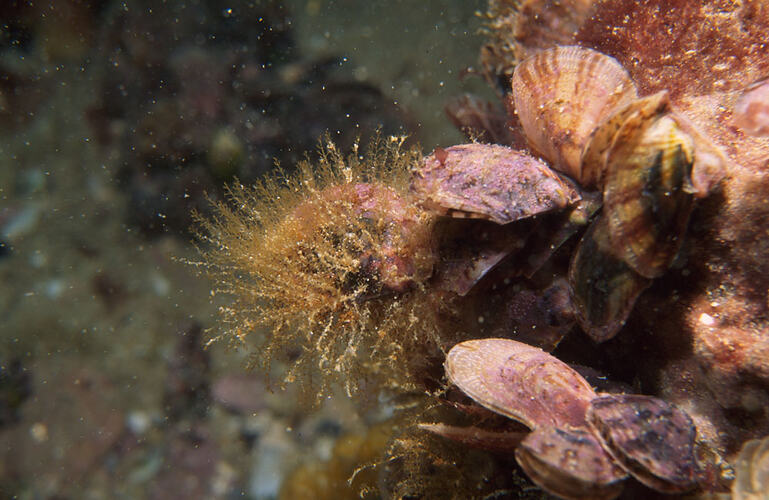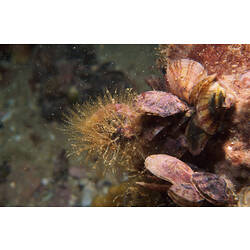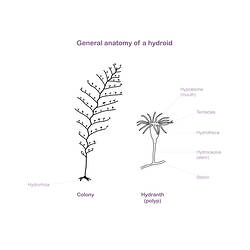General Description
Colony of individual polyps (hydranths) joined by root-like network of tubular stolons at the base. Colony shape is tree-like or bushy (arborescent). Colour: variable pale yellow to orange, gonothecae (containing reproductive structures) orange or pinkish. Up to 5 cm high.
Biology
Colonies of this species grow annually and become fertile in spring and summer.
Distribution
Circumglobal, tropical to Antarctic waters. Southern Australia.
Habitat
Subtidal, in still water colonies growing on invertebrates, particularly soft-textured sponges. To depths greater than 500 m.
More Information
-
Animal Type
-
Animal SubType
-
Brief Id
Graceful lacy yellow colonies, saucer-shaped hydrothecae.
-
Maximum Size
5 cm
-
Habitats
-
Diet
Plankton or Particles
-
Diet Categories
Plankton
-
Hazards
Generally not harmful but still able to sting bare skin.
-
Endemicity
-
Commercial
No
-
Conservation Statuses
DSE Advisory List: Not listed, EPBC Act 1999: Not listed, IUCN Red List: Not listed
-
Depths
Shallow (1-30 m), Deep ( > 30 m)
-
Water Column Locations
On or near seafloor
-
Taxon Name
-
Scientific Author
Coughtrey, 1876
-
Common Name
Hydroid
-
Phylum
-
Class
-
Subclass
-
Order
-
Family
-
Genus
-
Species Name
delicatulum



